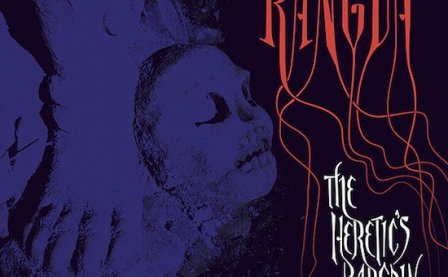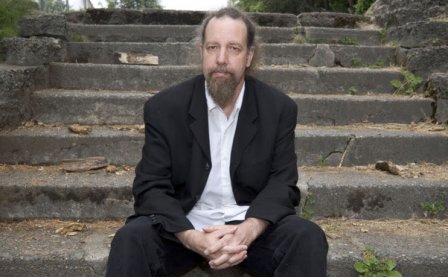Rangda is, in essence, an exercise in balancing the idiosyncrasies of Richard Bishop, Ben Chasny, and Chris Corsano. They’ve never had a problem doing it, but they perfect it onThe Heretic’s Bargain: Bishop’s energy moves forward, persistently cutting through to some golden destiny; Chasny’s energy is consuming and destructive, a cyclone that swallows the music itself (take a look around at a Six Organs show and notice all the kids with their eyes rolled back, jaws hanging open). They’re a thrilling pair, giving each other space to stretch out but staying close to cohere. Corsano matches the energy of each with an enviable malleability, staying closer to Bishop than a shadow, then turning around to throw cars, houses, and oil tankers into Chasny’s twisters. Most bands pool together into one voice; Rangda prove three people can say three times as much.
“Mondays are Always Free at the Hermetic Museum” is the album’s core balancing act, a showcase of all the things these three musicians are capable of doing together and, ultimately, how they’re able to transcend the matrix. “Hermetic Museum” is a reference to Musaeum Hermeticum, a 17th-century German book that collected writings on the art of alchemy; it’s a title that gives all three of them an excuse to practice their configurations, and if it’s a little on the nose, the music’s never less than inspired. At the start, Chasny and Bishop drone together, a slow beginning like the sun reaching over thousands of dead acres of desert. One of hums, fluid and sweet, the other scratches out little metallic slivers that swirl in the breeze. The drone becomes an uneasy wait, and the dense figure bursts forth, weaving and dodging like a manic, drunken attack. The snaking melody has more to say than there are beats, pouring forth like a little kid running home to tell their parents about some violence on the playground, words spilling everywhere. (Corsano plays like Elvin Jones, limbs going every which way.) Later in the piece, in a moment that does truly feel alchemical, Chasny and Bishop softly pick together — free of anything like a trademark style — while Corsano beats steadily. They achieve a kind of spiritual stasis, stopping only occasionally while Bishop’s guitar mumbles into the circle.
And yet, it’s Chasny who owns the real spectacular moment on “Hermetic Museum.” Bishop is playing a marching two-chord figure, and suddenly Chasny’s holding a crackling charge of lightning in his hands — fraying and squalling, escaping deafeningly through his fingers. Chasny’s struggle is doubled by Corsano’s crashing; Bishop’s stark, marching figure is the darkened room where it plays out. Chasny — as he does in a few other places in the album — not only tempers Bishop’s deluge-like figures, but uses them as leverage to shut the entire system down, hijacking the forward momentum and jackknifing it into a mountain side, engulfing the whole record, even temporarily, in a searing fireball. It’s Bishop’s tense, snaking figures and Corsano’s sheer fury that make the moment possible; it’s Chasny’s mastery of sound and fury that takes it over the edge.
More about: Rangda




